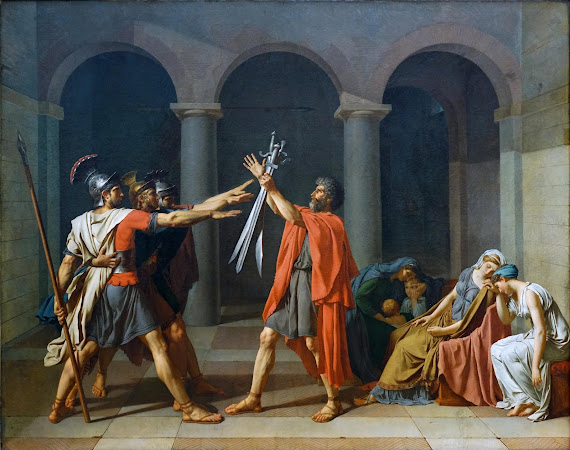Elements of Art
 |
| Vincent Van Gogh, The Olive Trees Saint Rémy, 1889 Oil on canvas |
For this week's blog, I would like to analyze the elements of art depicted in Van Gogh's The Olive Trees. I remember this painting hanging up in my art class throughout high school. We never spent any time talking about it; instead, it was there for inspiration. It is a very interesting piece and deserves to be talked about!
Unfortunately for us artists, Vincent Van Gogh died quite some time ago under some depressing circumstances. Nonetheless, he left behind some fantastic art for the whole world to admire which, in a way, keeps him alive to this day. You know those question games where they ask, "If you could talk to any famous person dead or alive, who would it be?" Well, I would most definitely choose to talk to Van Gogh. Not only do we both use art as an escape from the world and our minds, but we also use impressionistic techniques in our art. It would be so cool to learn a thing or two from him.
Colors and Emotion
Van Gogh uses the same style throughout all his pieces and that's what distinguishes him from anyone else. His curved and broken lines are a signature touch of his work and while he does use a combination of warm and cool colors, he seems to incorporate more cool colors (blue, green, purple). In my opinion, cool colors represent more depressing emotions rather than happiness. The best example is to think of the sun and its colors: yellow, red, and orange. These are warm colors and the sun is warm; therefore you can think of summer and happiness. During the winter, it is cold and we see a lot of blue and purple which again, are cool colors. I personally get sadder during the winter due to the lack of sunlight, therefore I connect cool colors with depressing emotions. Now that you understand my interpretation of colors, you can also understand why Van Gogh seems to create emotions of sadness with feelings of comfort. Why comfort? Well, even though his colors create a colder emotion, his patterns and textures feel familiar which makes us comfortable. A lot of times something that is unfamiliar makes us uneasy. But not this piece. I think I'd definitely hang a copy of this in my house.
Shape, Form, and Lines
I relate form to shape because both can be geometric or organic. In The Olive Trees, it is obvious that Van Gogh uses organic shapes with a two-dimensional (2D) form. None of these elements of course could be created without lines. Van Gogh's lines are curved and broken, which helps create these organic shapes and 2D form.
 |
| Broken lines + Organic Shapes = two-dimensional form |
Texture
Van Gogh uses his opposing lines and contrasting colors to illustrate optical texture. These textures can almost be felt as soft and smooth when looking at them. You can tell he's spent a lot of time on the painting as there is so much contrast and detail. Though the contrast of colors creates optical texture throughout the entire piece, it is most felt in the grass. It just feels smooth and free, as if it's moving in all directions with the air.
 |
| Optical texture: soft, smooth, and free |
I suppose the pattern could be related to the texture because it seems as though optical texture is the pattern. Optical texture is hard to put into a definition, but it is basically how lines "move" to create a sense of structure or texture. Does that make sense? Van Gogh's broken and curved lines are repeated throughout the entire piece and create every element, including patterns.
 |
| Patterns throughout |
“Vincent Van Gogh. The Olive Trees .” Museum of Modern Art (MoMA), www.moma.org/collection/works/80013.
“The Elements of Art .” National Gallery of Art, www.nga.gov/education/teachers/lessons-activities/elements-of-art.html.

Hi Laura,
ReplyDeleteI like that you picked a Van Gough that is a little less well known. I love your analysis of the emotions of color and agree that Van Gough does an amazing job of utilizing contrasting emotions to create a sense of comfort, though I would not have come to that analysis on my own. I think of Van Gough's use of color and lines as a hallmark of his work. In this case, his bold black lines captures the gnarly, twisty grandeur of the olive trees . This is contrasted with the softer more ethereal curves of the clouds and and hills and lends an almost other-worldy quality to the trees.
I really like this painting, it's a very pretty piece to do. I really enjoy how engaging your blog is, I like how you made it as if your having a conversation and explaining something rather than just handing them the information. Great job.
ReplyDeleteI really like a lot of Vincent Van Gogh's work myself, especially how he uses the element of texture to really give his pieces "feeling" visually making them satisfying to look at for me. One thing that I really liked about this post is that you touched up on how he uses all his elements to connect to a viewer emotionally whether it be through, colors, lines, shape, form, texture, or even pattern! Great post.
ReplyDelete